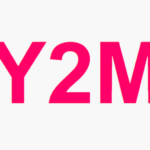As you continue to streamline business operations, integrating your pricing and billing solutions into your existing software stack is not just an improvement; it’s a transformation. This integration is critical to bolstering productivity, reducing errors, and improving customer satisfaction.
Over the next several sections, you’ll discover how to merge these systems smoothly with your current setup, ensuring that every component works harmoniously to support your business goals.
Understanding the basics of software integration
Before diving into the technicalities, it’s essential to grasp what software integration involves and why it’s crucial for your business. Integration means ensuring that different software applications, including your billing systems, communicate and operate effectively together.
This interconnectedness allows data to flow seamlessly from one system to another, facilitating the automation of billing processes based on the pricing structures you have in place. The goal is to create a cohesive ecosystem where data input in one area can dynamically influence outcomes in another.
Choosing the right integration tools
Selecting the appropriate integration tools is paramount. The market offers a range of middleware, APIs, and dedicated integration platforms to help bridge your billing solutions with existing CRM, ERP, or accounting software.
When choosing these tools, consider compatibility with your current software, the ability to scale as your business grows, and the vendor’s level of support. Tools that offer customizability and handle complex data structures will be particularly beneficial in adapting to your specific billing needs.
Streamlining data flow and accessibility
The key to successful integration is ensuring a smooth and consistent data flow across your systems. This involves setting up data synchronization protocols to ensure that updates in one system are automatically reflected in others.
For example, changes in customer subscription plans in your CRM should automatically update the billing amounts in your financial systems. Implementing a centralized database can also aid in reducing redundancies and ensuring that all systems access the most up-to-date and accurate data.
Overcoming common integration challenges
Integration projects can be complex and fraught with challenges, including data mismatches, system incompatibilities, and disruptions to existing processes. Thorough planning and testing are essential to overcome these challenges.
Start with a pilot project that covers a critical part of your process, which can provide insights and allow adjustments before a full-scale rollout. Additionally, training your team to handle the new integrated system will minimize disruptions and help them manage the new system effectively.
Leveraging integration for improved decision-making
With your billing solutions fully integrated into your software stack, you can harness enhanced data analytics to make more informed business decisions.
Integrated systems provide a holistic view of business operations, allowing you to track revenue streams accurately, analyze profitability, and adjust pricing strategies as needed.
This comprehensive view helps identify trends and improvement opportunities, ultimately leading to better financial management and business growth.
Compliance and Security
Integrating pricing and billing systems makes maintaining security and compliance with financial regulations more critical. Ensure that the integration tools and processes you choose adhere to industry data security and privacy standards.
Regular audits and updates of the systems can also help identify and mitigate any potential security risks, ensuring that customer data is always protected.
Testing and continuous improvement
Once integration is underway, continuous testing and optimization of the systems are vital. Regular checks and updates will help ensure the integration remains robust and all components function as intended.
Feedback from users can also provide valuable insights into how the system can be improved better to meet the needs of your business and your customers.
Conclusion: Charting a course for integrated success
Integrating your billing solutions with your existing software stack is a strategic move that can significantly transform your business. By understanding the integration basics, choosing the right tools, and addressing potential challenges head-on, you set the stage for a smoother, more streamlined billing process.
This improves your internal workflows and ameliorates your customers’ experience, fostering loyalty and driving growth. By implementing these technological advancements, you’ll continue to build a resilient, forward-thinking business well-equipped for the challenges of the modern market.











Leave a Reply